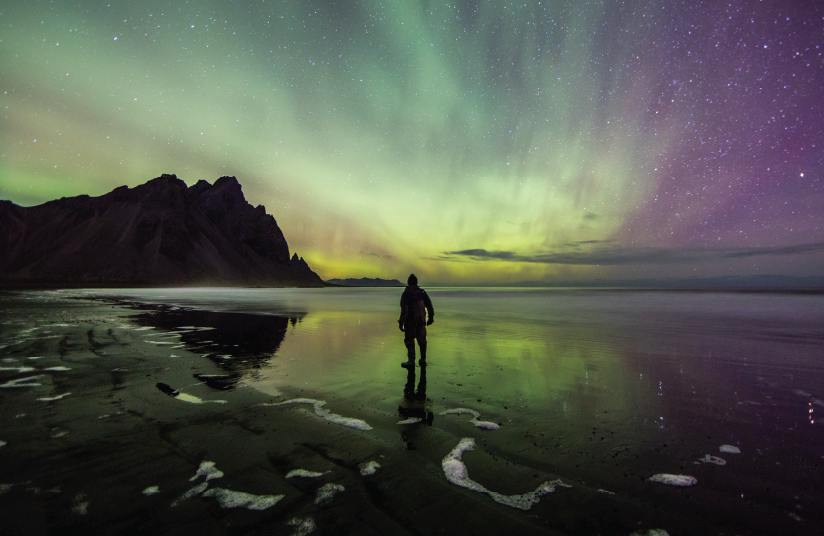
Although Alaska has its urban centers, access to healthcare in many parts of the 49th state is limited. Take Utqiagvik (formerly Barrow) for example, the northernmost city in the United States. The local physicians are valued and appreciated, but locum tenens doctors are also desperately needed to help care for the underserved population and surrounding communities. Locum tenens physicians looking for a unique and rewarding experience won’t find a better place to work than Alaska.

The people of Northern Alaska
Being so far north, the temperatures in Northern Alaska are cool in the summer and frigid in the winter. On average, high temperatures reach above freezing only 120 days a year and can drop to 65 degrees below zero. The Inupiat have adapted well to this climate, surviving mainly by hunting whales, seals, polar bears, walruses, waterfowl, and caribou or catching fish from the Arctic Ocean or nearby rivers and lakes — a practice that’s served them well for over a thousand years. Traditionally, no part of the animal is left unused, with much of the meat replacing vitamins and nutrients of fruits and vegetables that can’t grow in the Arctic climate. The meat and blubber of each captured whale benefit every member of the Inupiat community; the hides and fur have water- and wind-proof qualities.
Caring for the population

Located in an isolated town of just over 4,000 residents, Samuel Simmonds Memorial Hospital in Utqiagvik is the medical hub created by the Arctic Slope Native Association. It serves five villages that are only accessible by airplane.
Susan Miklavcic, senior director of medical staff services at Samuel Simmonds, describes the hospital as small and critical access.
“It’s a 10-bed facility, six inpatient beds, two swing beds, and two state-of-the-art labor and delivery rooms,” she says. “It has a four-treatment room ED with a procedure room, and then we have our primary care clinic with a specialty clinic. We’ve got a dental clinic that’s always up and running and an eye clinic they staff two weeks per month. It’s a pretty busy building. We’re also the only inpatient and commercial pharmacy in the area. If you need healthcare in our stretch of the woods, we’re the only place you can come and get it.”
Urgent care and family practice physician Dr. Robert Garrison, who worked multiple locums assignments at Samuel Simmonds, says the medical problems are typically the same despite the cultural differences. “There’s a lot of diabetes up there, many people overweight up there, a lot of hypertension, so that part is the same,” he says.
Although the hospital is a state-of-the-art facility, its size limits the amount and type of specialized care it can provide. Patients who are critically ill or need high-risk procedures are regularly Transported to Anchorage.
OB/GYN care in remote Alaska
Dr. Rachael Consoli filled a much-needed OB/GYN locums assignment in Utqiagvik. When she arrived, she says she was happy to support the “heroic” family medicine physician who’d been there for 16 years. Still, Samuel Simmonds desperately needed a specialist to provide specialized OB/GYN care and free up the family medicine practitioners to care for other patient needs.
She says patients with uncomplicated pregnancies could remain in the Utqiagvik with their families. Still, for complicated ones, the women would have to be flown to Anchorage and separated from their families.
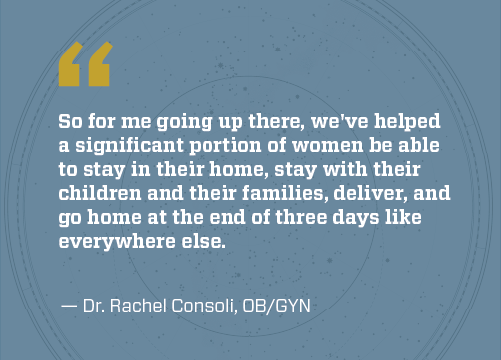
“The patients are so appreciative. Can you imagine — you have five children, and you go to have number six, then you have to travel down to Anchorage and stay there for four weeks, stay in lodging, and not be in your home?” she says. “So for me going up there, we’ve helped a significant portion of women be able to stay in their home, stay with their children and their families, deliver, and go home at the end of three days like everywhere else.”
The value of locum tenens physicians in Alaska
Because of its remote location, Samuel Simmonds regularly depends on locums to help meet the local community’s healthcare needs and the surrounding villages.
On her assignments, Dr. Samantha Conroy, a family practice obstetrician, family practitioner, and urgent care physician, traveled to clinics in some of the satellite villages to help care for patients who couldn’t make it into Utqiagvik — flying there and back in a small plane.
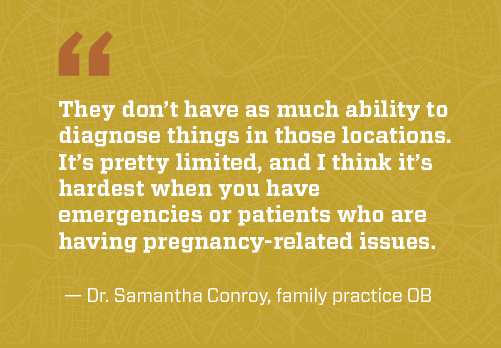
She says being a locum in that part of the world requires flexibility and the ability to multitask. “They don’t have as much ability to diagnose things in those locations,” she says. “It’s pretty limited, and I think it’s hardest when you have emergencies or patients who are having pregnancy-related issues. It isn’t easy to manage those kinds of things over the phone. We do end up flying many patients back and forth just to be seen in Utqiagvik or Anchorage.”
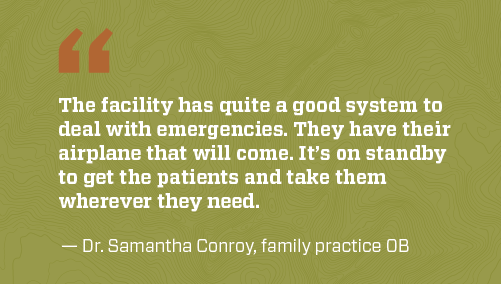
Dr. Conroy was also impressed with how the facility managed those patients needing additional care. “The facility has quite a good system to deal with emergencies. They have their airplane that will come. It’s on standby to get the patients and take them wherever they need. It’s pretty impressive. They seem to really be able to make it work.”
Enjoying time off in an Arctic climate
When she wasn’t working, Dr. Consoli says she loved to go for long walks, catch up on her reading, and — weather permitting — take in some of the downtown festivities. One big annual event is the Barrow Whaling Festival, held in June, where the Inupiaq give thanks for a successful hunting season.
On one locums assignment, Dr. Garrison was lucky enough to spot a polar bear walking on the frozen ocean and loved the ability to enjoy once-in-a-lifetime experiences — the bitter cold being part of it. He enjoyed hiking, photography, and searching for snowy owls.
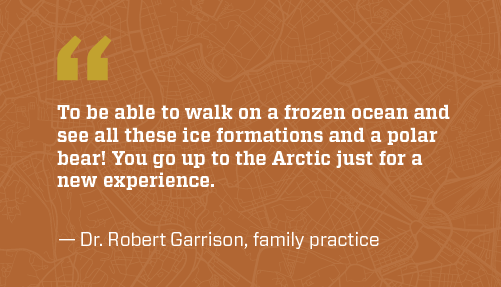
“To be able to walk on a frozen ocean and see all these ice formations and a polar bear!” he says. “You go up to the Arctic just for a new experience. I’d never experienced minus 20 degrees, and the wind blows 20 miles per hour. You get your hand out of the glove for over a minute and have frostbite. That was part of the experience: the cold, the frozen ocean, incredible sunsets over this frozen ocean, working with a new culture, all of it appealed to me.”
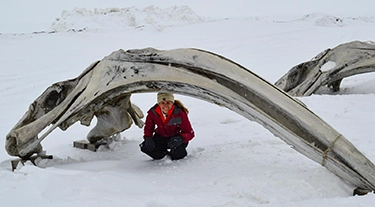
Dr. Conroy also loved the uniqueness of the environment. Her first assignment was in February, so she didn’t see much sunlight — and it was cold.
“I’m a super outdoors person, so I like being outside, especially on my time off. When it’s so cold outside, it’s actually dangerous to go out,” she says. “I really was inside almost 24/7 for the month that I was up there, so it was pretty difficult. We did get out a little bit here and there to see some interesting sights.”
Her second assignment there was in the summertime. “People are out fishing and doing the whaling in subsistence living at two o’clock in the morning,” she says. “It’s very interesting. To help us sleep, we just put aluminum foil over the windows, and that really helps block the sunlight. I just had my bedroom, and it was always very dark.”
Balancing medicine and adventure in Alaska
Family medicine physician Dr. Alison Liewen particularly enjoys rural locum tenens assignments and chose to work in remote Dellingham, Alaska, located in the southwest-part of the state. “Dellingham is a big fishing port on Bristol Bay. The organization where I’m working is Bristol Bay Area Health Corporation. It’s a tribal organization, and the majority of patients I treat are natives.”

Dr. Liewen describes how Dellingham is the hub between 28 even smaller communities, in which specially trained community health aids coordinate care with the patients in the smaller towns in tandem with the physicians. Dr. Liewen says as a family physician, she really enjoys the challenges as well as opportunities of being the only physician in these remote locations, “As a family physician, being in small towns gives you the chance to practice a much greater variety of medicine because you’re the one doctor in town.”

Working in the more remote areas of Alaska required a bit of finessing with medical supplies and medicines. “We fly in with one bag of medical supplies to do almost any procedure I could want to do there,” she says. “And then we have one bag of medicine that we take.”
Working on Bristol Bay offers a wide variety of adventures for outdoor enthusiasts. Dr. Liewen is an avid skier and loved the wide expanse of places to ski, and particularly enjoyed the fact that Alaska’s long days allowed her more time to hit the slopes. “I spent the evening skiing on the tundra, and there’s nothing out there. So it was a really, really cool experience to just ski into the sunset that lasts forever.”
Curious about what life would look like working locum tenens in Alaska? Watch this video about Alaska, including pictures from Drs. Consoli, Conroy, and Garrison during their time there:
Have the experience of a lifetime working locum tenens in Alaska
Whether you’re interested in practicing medicine in a unique environment, immersing yourself in the culture of a centuries-old Alaskan Native population, experiencing a couple of straight months of daylight, or taking hikes in the Arctic while wildlife-watching a locums assignment in the northernmost city in the United States may be the right opportunity for you.
Interested in learning more about working locums in Alaska? Call us at 1.866.858.6269 or view today’s locum tenens jobs in Alaska.



 Back
Back